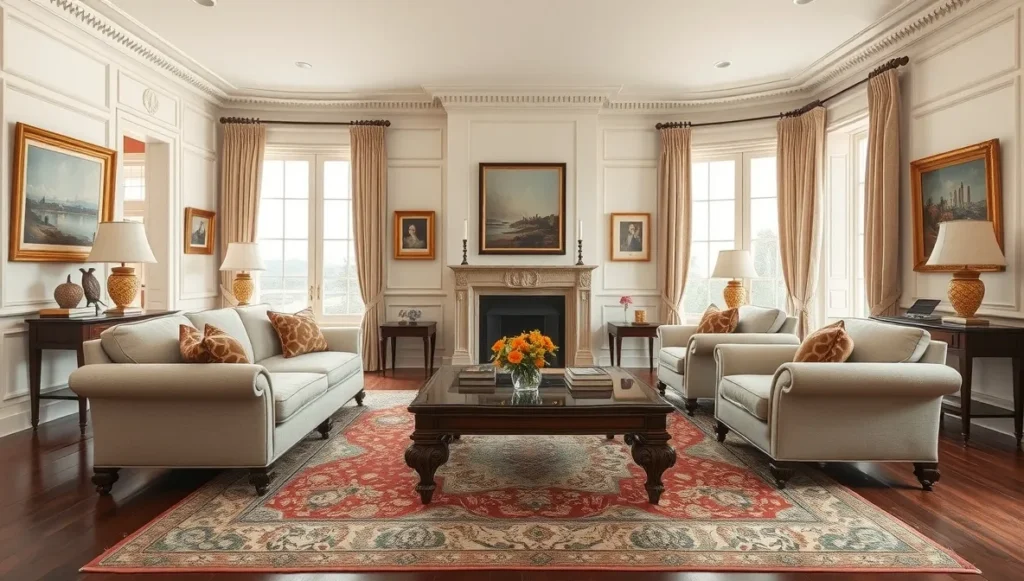- Why Vintage Interior Design Still Has My Heart - September 3, 2025
- Still in Love with Traditional Design – And Here’s Why - September 3, 2025
- The Enduring Charm of English Country Design: Why This Style Never Goes Out of Fashion - September 2, 2025
Table of Contents
Back in 1999, I thought I knew everything about interior design. Fresh out of design school, I was convinced that cutting-edge meant everything. Traditional? That was for old ladies with doilies.
Boy, was I wrong.
Fast forward twenty-five years, and guess what style my clients keep requesting? You got it – traditional. Not the stuffy, museum-like version people imagine, but real traditional design that works for actual families. Kids, pets, busy lives, and all.
Here’s the thing nobody tells you about traditional design: it’s not about recreating your great-aunt’s parlor. It’s about using design principles that have worked for centuries because, well, they actually work.
What Makes Traditional Design Actually Traditional?
Traditional style borrows heavily from European decorative arts – think 18th and 19th century English, French, and American colonial influences. But don’t panic. You don’t need a history degree to pull this off.
The basics are pretty straightforward. Balance matters. A lot. Walk into any room that feels “right” and you’ll probably find matching elements on either side – lamps flanking a sofa, artwork hung at consistent heights, furniture that doesn’t fight for attention.
Colors lean warm and rich. We’re talking burgundy, deep greens, navy blues, creams, and golds. Why these colors? Because they age gracefully. That trendy turquoise accent wall from 2015? Yeah, not so much. But a deep forest green? Still looks gorgeous today.
The Non-Negotiables of Traditional Style
Buy Good Furniture (Seriously, Don’t Cheap Out)
I’ve seen too many clients buy three mediocre sofas in five years instead of one quality piece that lasts decades. Traditional furniture emphasizes craftsmanship. That Chesterfield might cost more upfront, but it’ll outlast anything from a big box store.
Real wood matters. Mahogany, cherry, walnut – these aren’t just pretty words. They’re investments that actually appreciate over time.
I came across this pairing recently while visiting someone – a light camel Chesterfield with carved mahogany legs beside a solid mahogany coffee table. The kind of craftsmanship that feels solid, honest, and made to last for generations.
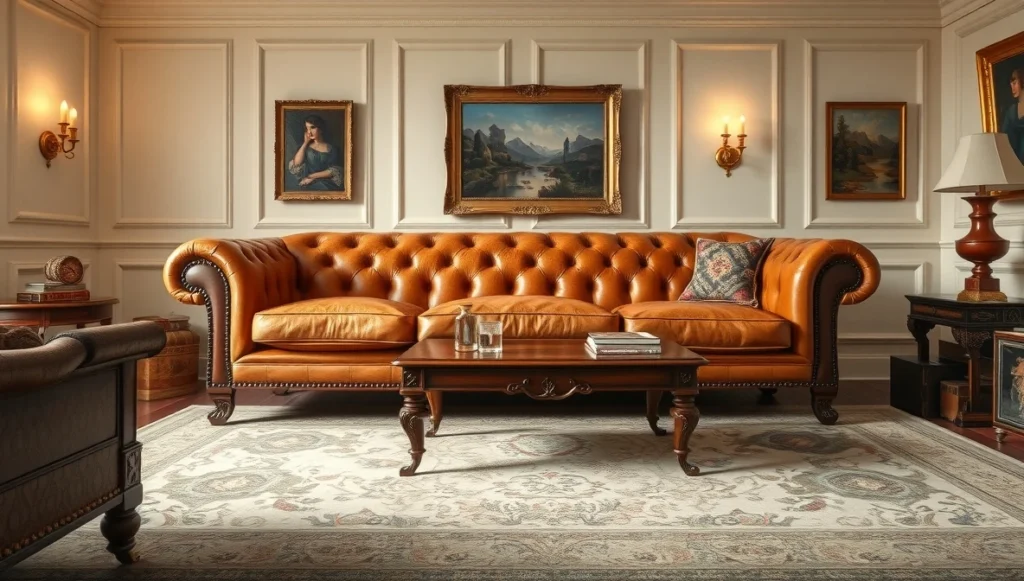
Pattern Mixing Isn’t Scary (Once You Know the Secret)
Here’s my foolproof method: pick one large-scale pattern, add one small-scale pattern in similar colors, then ground everything with solids. Floral with stripe? Classic. Plaid with toile? Absolutely. The trick is keeping your color palette consistent.
Architectural Details Change Everything
Crown molding transforms a basic room into something special. Even simple trim work makes ceilings look higher and rooms feel more expensive. Don’t have original details? Add them. Trust me, it’s worth every penny.
Room By Room: What Actually Works
Living Rooms That Don’t Look Like Furniture Showrooms
Forget matching furniture sets. The best traditional living rooms look collected over time. Start with a neutral sofa – something you won’t hate in five years. Then add different chairs that share one common element. Maybe they’re both upholstered in blue, or they both have similar wood tones.
Position everything for conversation. I can’t stress this enough. Your furniture should encourage people to talk to each other, not stare at a TV. Create a U-shape with your seating. Make sure side tables are actually useful – big enough for drinks and books, not just decoration.
Window treatments make a huge difference. Full-length panels make any window look more important. Hang them high and wide – this trick makes windows appear larger than they actually are.
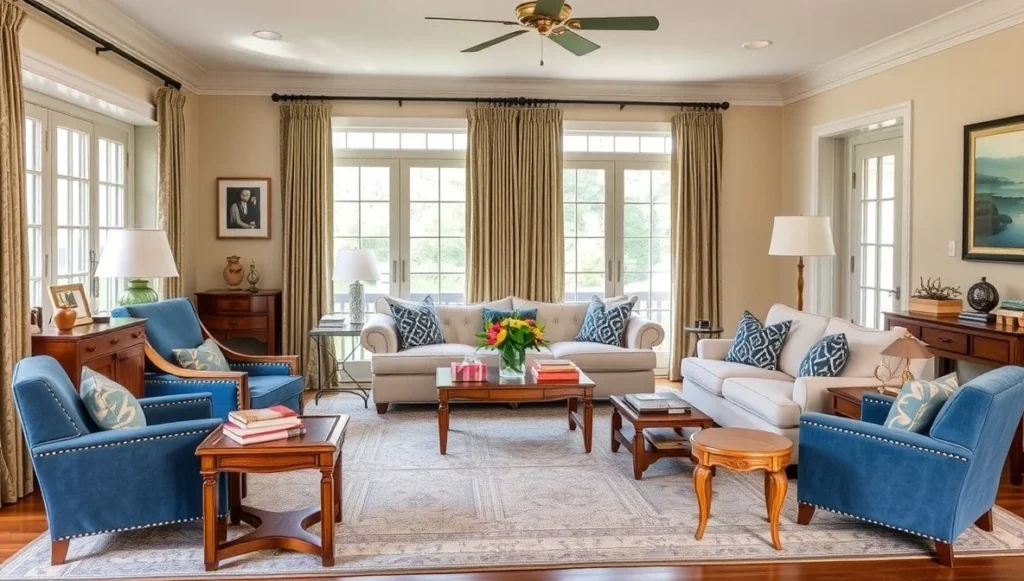
Dining Rooms People Actually Use
So many families skip formal dining rooms now. Big mistake. Even if you only use it for holidays, having one designated space for nice meals feels special.
The table should feel substantial. Flimsy doesn’t work in traditional design. Solid wood in rich tones – that’s your foundation. Round tables work great in smaller spaces; rectangular ones suit more formal setups.
Lighting can make or break this room. Your chandelier should hang about 30-36 inches above the table. Add dimmers – they’re essential for creating the right mood. Nobody wants to eat under harsh overhead lighting.
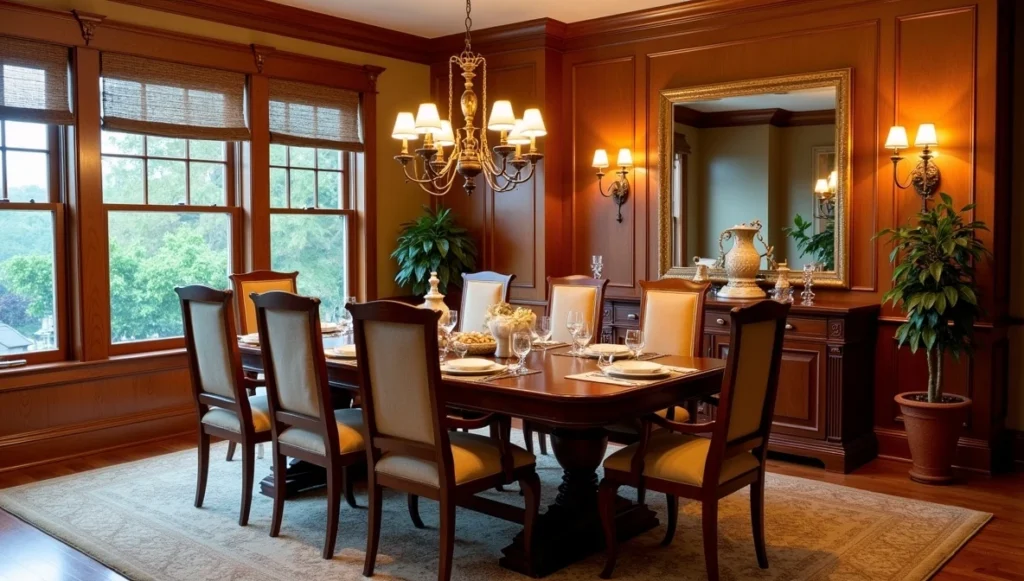
Kitchens That Don’t Scream “Generic Suburban”
Traditional kitchens balance old-world charm with modern convenience. Your cabinets should look like furniture, not generic boxes. Raised panel doors, quality hardware, furniture-like details – these elements make even builder-grade cabinets look custom.
Stick with classic colors. White, cream, soft gray, maybe sage green if you’re feeling adventurous. Bold colors date quickly, but these gentle tones work for decades.
Hardware matters more than you think. Cup pulls and bin pulls in warm brass or oil-rubbed bronze look authentic. Those sleek modern bar pulls? They’ll scream “2020s renovation” in ten years.
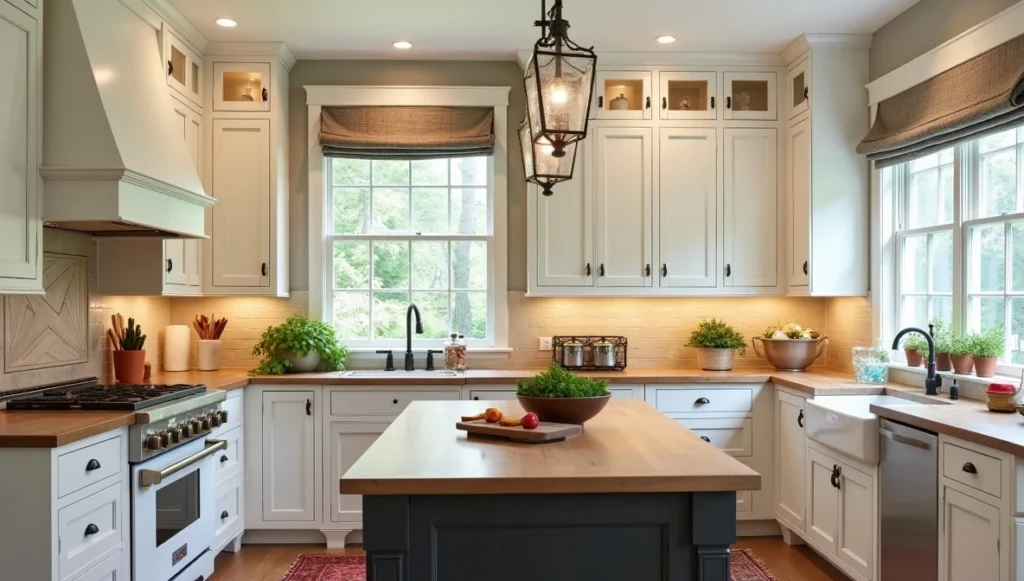
Bedrooms That Actually Help You Sleep
Traditional bedrooms put comfort first, Instagram-worthy styling second. Your bed needs to dominate the room – invest in a substantial headboard and decent bedding. Upholstered headboards in linen or cotton deliver both comfort and style.
Keep colors soothing. Soft blues, warm grays, gentle greens. Save bold colors for throw pillows you can change easily. Your walls should promote relaxation, not keep you awake.
Bedside tables should match in style, but they don’t have to be identical. Table lamps provide essential task lighting for reading. And please, include a comfortable chair. You need somewhere to sit while putting on shoes or just relaxing.
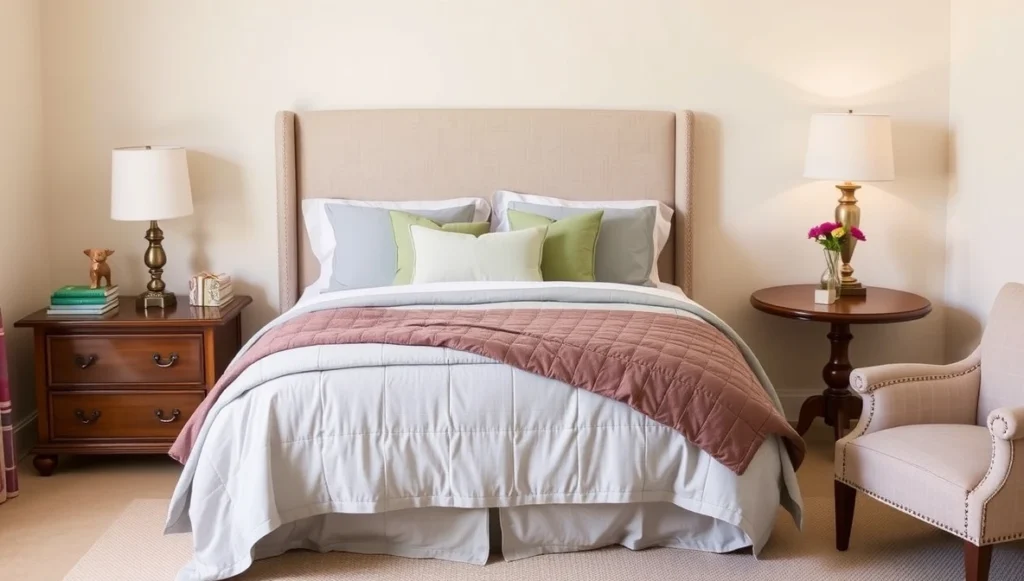
Kids’ Rooms That Won’t Embarrass Teenagers
This is tricky territory. You want spaces that feel special to kids but won’t require complete overhauls as they grow. Start with neutral walls – white, cream, or soft gray work with any color scheme.
Traditional patterns like gingham, small florals, or simple stripes provide visual interest without overwhelming small spaces. These patterns work for boys and girls and don’t feel babyish as kids age.
Invest in quality furniture. Solid wood beds in traditional styles transition beautifully from childhood through college years. Built-in storage helps manage clutter while maintaining style.
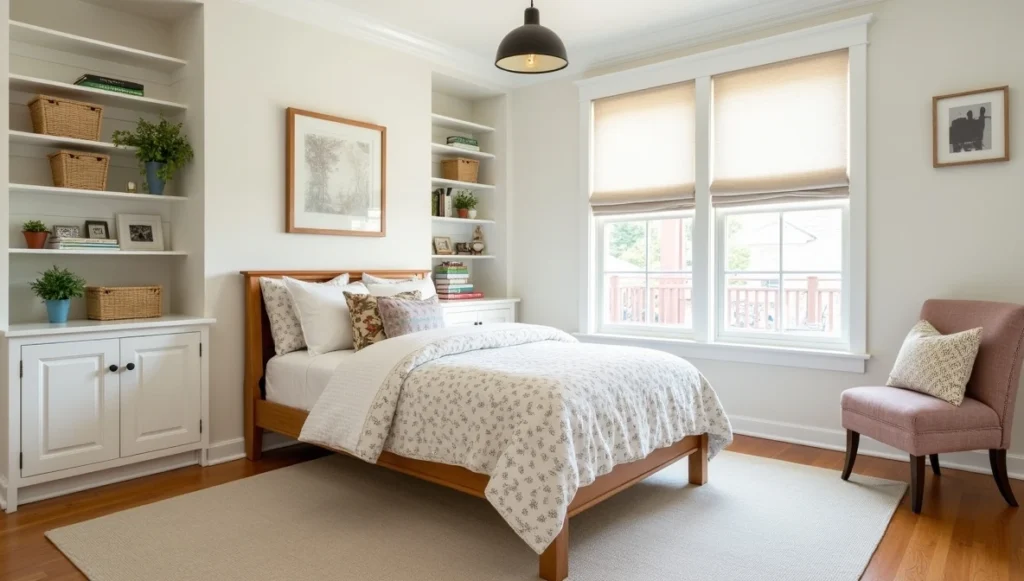
Bathrooms That Feel Like Spas
Traditional bathrooms emphasize quality over trendiness. Pedestal sinks, classic faucets, substantial vanities – these create your foundation. Stick with one metal finish throughout. Mixing metals rarely looks intentional.
Subway tile never goes out of style. Use it on walls with confidence. Natural stone floors add texture and luxury. White fixtures remain the safest choice – they work with any color scheme and don’t limit future updates.
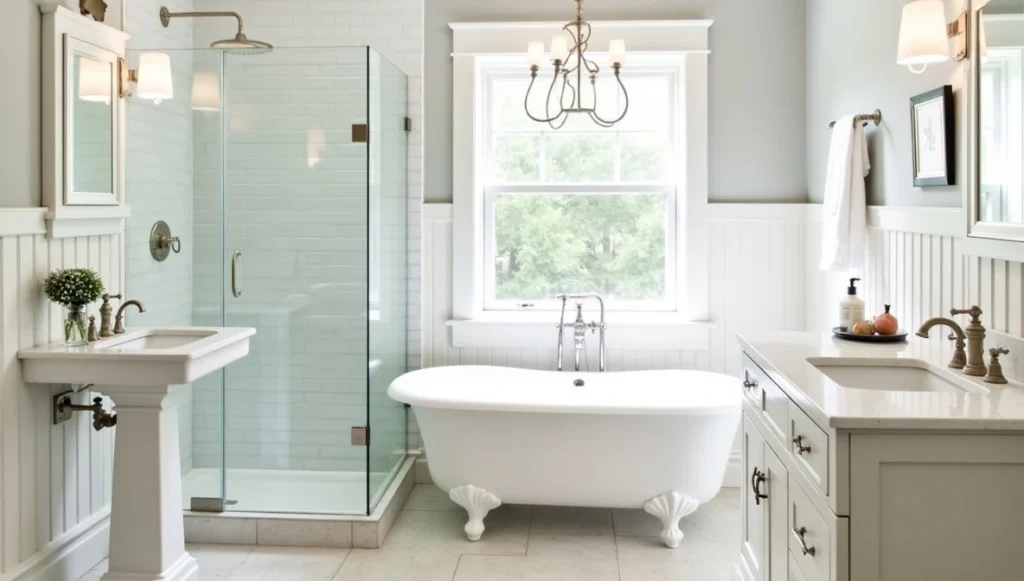
Home Offices That Don’t Feel Corporate
Traditional home offices balance professional needs with residential comfort. A substantial desk anchors the space – look for pieces with built-in storage and filing capabilities.
Fill bookcases with actual books, family photos, and meaningful objects. This keeps the space feeling like home rather than a branch office. Good lighting is crucial – desk lamps for tasks, overhead fixtures for general illumination.
Colors That Never Go Out of Style
After watching countless color trends rise and fall, I’ve learned which combinations have real staying power. Navy and cream works everywhere. Deep green with warm gold brings richness without overwhelming. Burgundy with soft gray creates sophistication that photographs beautifully.
Use your main color in different intensities throughout the room. That navy might appear on walls, repeated in fabrics, echoed in artwork. This repetition creates harmony without being boring.
Neutral backgrounds let rooms evolve over time. When walls stay in warm whites or soft grays, you can refresh with new accessories without major renovations.
Making Traditional Work for Modern Life
Today’s families need different things than 18th-century households. Open floor plans challenge traditional principles, but they don’t eliminate them. Create defined areas within large spaces using area rugs and strategic furniture placement.
Technology integration requires planning. Flat-screen TVs can hide inside entertainment centers designed with traditional proportions. Charging stations can live inside traditional desks or armoires.
Modern storage needs are intense. Look for traditional furniture with hidden storage – ottomans that open, coffee tables with drawers, window seats with lift-up tops.
Why This Style Keeps Working
Traditional design appeals to people seeking stability in an unstable world. These rooms feel grounded and peaceful – qualities that become more precious as life gets more hectic.
Quality traditional furniture actually improves with age. That antique chair develops character that new pieces can’t replicate. Classic color combinations never look dated because they’re rooted in nature, not fashion.
Traditional rooms encourage connection. Furniture arranged for conversation, dining rooms designed for lingering over meals, comfortable reading nooks – these elements support what matters most.
Starting Your Traditional Journey
You don’t need unlimited budgets. Start with one room and get the basics right. Buy the best upholstered pieces you can afford – they’ll last longer and look better than cheap alternatives.
Mix genuine antiques with quality reproductions. One real antique piece paired with new furniture in classic fabrics creates that collected-over-time feeling.
Paint transforms rooms affordably. Rich colors on accent walls, quality trim painted in contrasting colors, ceiling treatments – these changes make modest rooms feel expensive.
Be patient. The most beautiful traditional homes develop over years, not months. Each addition should feel intentional and contribute to the overall harmony.
Whether you prefer English country comfort, American colonial simplicity, or French formal elegance, traditional design offers a proven framework for creating homes that honor craftsmanship while serving contemporary needs.
